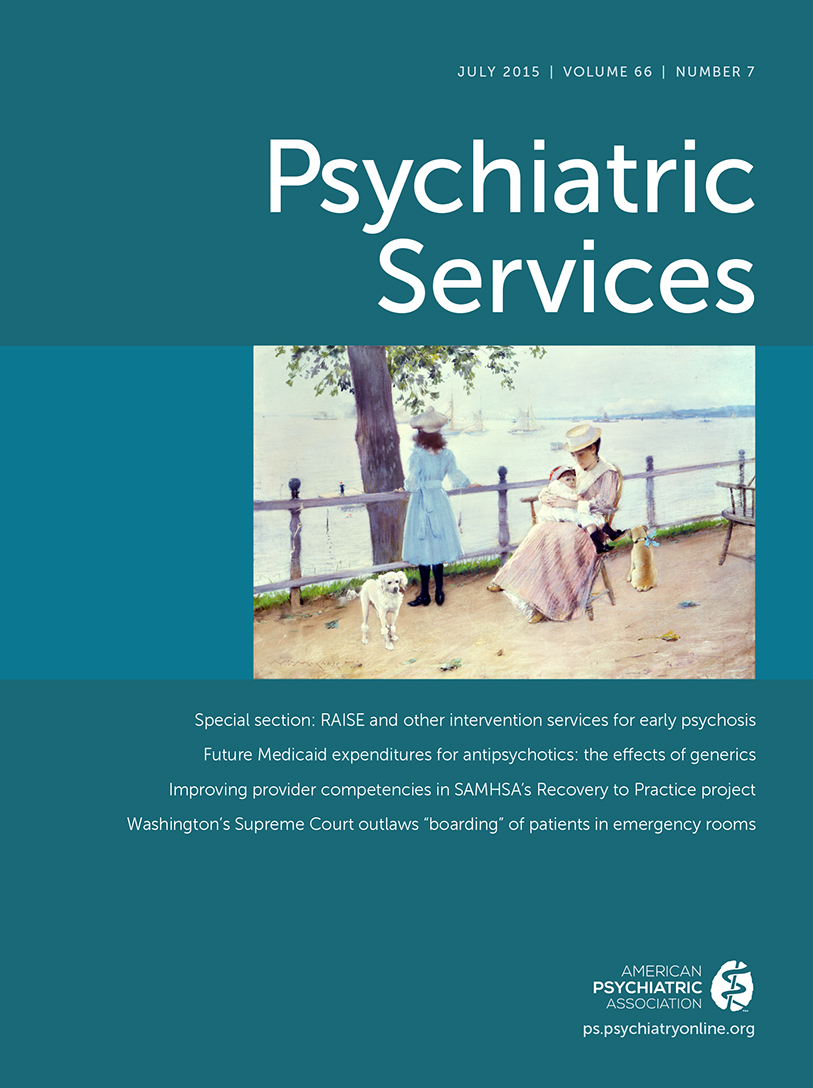The Three-Part Model to Pay for Early Interventions for Psychoses
TO THE EDITOR: We read with interest Frank and colleagues’ column (1) [this issue] proposing a novel three-part payment model for early interventions for psychoses. The first part is a prospective per-case payment to cover the average cost of outreach, engagement, and retention per engaged client; the second is a per-service payment for clinical service delivery; and the third is an outcome-based component, intended to reward providers for improved outcomes. The three parts combined provide a sound framework to guide payment designs that adequately cover the costs of a coordinated service package but also align incentives with evidence-based early interventions.
We raise a few issues toward refining the model. First, start-up funds may be needed to support building the early intervention team (2) and a financially viable caseload. Second, when operationalizing the per-case payment (part 1 of the model), it may be challenging to define “engaged clients.” Early intervention programs have high dropout and individually tailored services. Varying the definition of engagement may have substantial financial implications for providers and embedded incentives for evidence-based care. For example, defining engagement by at least one program contact would maximize provider payment but carry perverse incentives for retention; defining engagement as having had contacts with all provider types, on the other hand, is at odds with the personalized nature of care, and providers may find it difficult to recover costs for clients who ultimately do not “engage.”
Third are the challenges in designing the outcome-based component (part 3 of the model) to be both valid and reliable. Prognostic and psychosocial factors affect individual outcomes. The validity of a given measure—the extent to which it reflects the quality and evidence-based practice of the team—should be scrutinized in light of new data, such as from the RAISE studies (3). On the other hand, given the typically small caseload (20–30 cases) of the teams, any measure is likely to be highly imprecise and unreliable, with a high risk of misclassifying teams (4).
In light of these issues, we propose the addition of a start-up payment to support the initial operation of the team, to be made in installments conditional on achieving well-defined milestones (for example, recruitment of core team members). Our second proposal is to make the per-case payment periodic (for example, quarterly), contingent on evidence of client engagement; the payment rate, however, could be adjusted by special needs (for example, substance abuse) or intervention stage (for example, postcrisis versus maintenance) (5). Third, we propose an approach to the outcome-based payment whereby, rather than tying payment to a single outcome, providers get credit for each client who achieves a predefined goal in any key outcome domain, including hospitalization (a key cost driver), and recovery-oriented outcomes, such as work or school performance and functioning. The prominence of the outcome-based payment (relative to the other two components) should be gradually increased as teams accumulate experience. These proposals may contribute to further aligning the model with the delivery of evidence-based early interventions as evidence accumulates to inform continuous refinement.
1 : Paying for early interventions in psychoses: a three-part model. Psychiatric Services 66:678–680, 2015Google Scholar
2 : Evidence-Based Treatments for First Episode Psychosis: Components of Coordinated Specialty Care. Bethesda, Md, National Institute of Mental Health, 2014. Available at www.nimh.nih.gov/health/topics/schizophrenia/raise/nimh-white-paper-csc-for-fep_147096.pdfGoogle Scholar
3
4 : The Reliability of Provider Profiling. Santa Monica, Calif, RAND Corp, 2009Crossref, Google Scholar
5 : Designing payment for Collaborative Care for Depression in primary care. Health Services Research 46:1436–1451, 2011Crossref, Medline, Google Scholar



